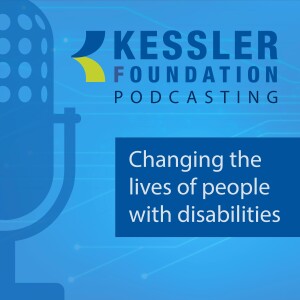
In this Expert Interview Series podcast, our host Laura Viglione, communications specialist at Kessler Foundation interviewed Dr. Nathan Hogaboom, the inaugural postdoctoral fellow from the Derfner Foundation grant in regenerative rehabilitation research at Kessler Foundation. For more information about Dr. Hogaboom, be sure and check out Dr. Hogaboom's bio below.
Be sure and check out Dr. Hogaoom's SCi grand rounds presentation given on May 18, 2018 at https://soundcloud.com/kesslerfoundation/10may18-nathan-hogaboom-scigrandrounds-final
This podcast was recorded and produced by Joan Banks-Smith, Creative Producer for Kessler Foundation on Thursday, May 10, 2018 at the Kessler Institute for Rehabilitation, Conference Center, West Orange, New Jersey.
For more information about Kessler Foundation and our researchers, go to KesslerFoundation.org
Like us on FaceBook, follow us on Instagram, listen to us on Soundcloud, and tweet with us on Twitter!
===============================
Dr. Nathan Hogaboom Bio
Dr. Hogaboom received his PhD in Rehabilitation Science and Technology from the University of Pittsburgh. While he was there, he worked with Dr. Michael Boninger to identify mechanisms behind rotator cuff degeneration in wheelchair users with spinal cord injury using different biomarkers. Dr. Hogaboom primarily worked with ultrasound to quantify changes in the structural and morphological properties of tendons in response to different wheelchair activities. He then moved more toward the mechanistic side of things by developing a technique to measure chemical biomarkers of inflammation of the shoulder joint in vivo. He measured changes in these inflammatory chemicals after wheelchair activities and correlated these them with the changes we observed in ultrasound properties. Although there were limitations to the study, it served at a starting point to his work at Kessler Foundation with Drs. Trevor Dyson-Hudson and Gerard Malanga. Dr. Hogaboom will work on a project that evaluates the safety and efficacy of a regenerative treatment designed to improve shoulder pain and function in wheelchair users with spinal cord injury who have not responded to therapy or other conservative treatments. His current focus is to work toward discovering the mechanisms behind the subjective improvements by looking at various radiologic and chemical biomarkers.
view more
More Episodes
012345678910111213141516171819
Create your
podcast in
minutes
- Full-featured podcast site
- Unlimited storage and bandwidth
- Comprehensive podcast stats
- Distribute to Apple Podcasts, Spotify, and more
- Make money with your podcast
It is Free
- Privacy Policy
- Cookie Policy
- Terms of Use
- Consent Preferences
- Copyright © 2015-2024 Podbean.com







